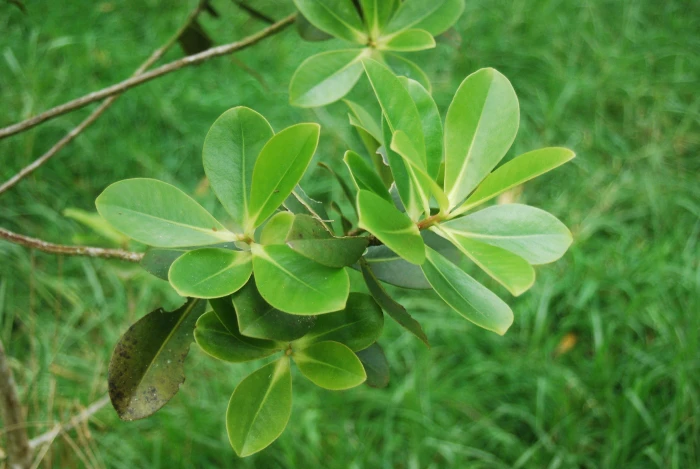Kōlea Lau Nui
(Myrsine lessertiana)
Kōlea Lau Nui (Myrsine lessertiana)
/
/

Loren Cassin Sackett
CC BY 4.0
Image By:
Loren Cassin Sackett
Recorded By:
Copyright:
CC BY 4.0
Copyright Notice:
Photo by: Loren Cassin Sackett | License Type: CC BY 4.0 | License URL: http://creativecommons.org/licenses/by/4.0/ | Rights Holder: Loren Cassin Sackett | Publisher: iNaturalist | Date Created: 2014-02-12T16:50:53-08:00 |

























Estimated Native Range
Climate Requirements for Gladstone, Missouri
| This Plant | Your Site | Plant Suitability for Your Location | ||
|---|---|---|---|---|
| • Precipitation | 28" - 194" | 39" | Aquatic | Aquatic |
| • High Temp. | 63°F - 88°F | 90°F | Your summers may be too hot for this plant. | Too hot |
| • Low Temp. | 39°F - 65°F | 18°F | Your winter temperatures may be too cold for this plant | Too cold |
This plant should grow well at your location with about N inches per year (Y minutes per month) of irrigation.
Summary
Myrsine lessertiana, commonly known as kōlea lau nui, is an evergreen tree endemic to the Hawaiian Islands, where it thrives in a range of environments including dry coastal areas, mesic forests, mixed mesic forests, and wet forests. It is found at elevations ranging from 689 to 4003 feet across all main islands. This species typically grows to a height of 59 feet with a trunk diameter of 1-2 feet, featuring a dense, rounded canopy with glossy, dark green leaves. The small, inconspicuous flowers are followed by purple-black berries that are attractive to birds.
Kōlea lau nui is valued for its cultural significance and its use in native plant restoration projects. It is adaptable to various soil conditions, provided they are well-drained, and it can tolerate both full sun and partial shade. While it is not commonly used in ornamental horticulture, it offers ecological benefits by supporting local wildlife. The plant has a history of use by Native Hawaiians, who crafted tools and house posts from its wood and extracted a red dye from the bark for kapa (bark cloth). The leaves were historically used for their psychoactive properties, though this is not a recommended use. Care should be taken to ensure that this tree is not planted near structures, as its roots can be invasive.CC BY-SA 4.0
Kōlea lau nui is valued for its cultural significance and its use in native plant restoration projects. It is adaptable to various soil conditions, provided they are well-drained, and it can tolerate both full sun and partial shade. While it is not commonly used in ornamental horticulture, it offers ecological benefits by supporting local wildlife. The plant has a history of use by Native Hawaiians, who crafted tools and house posts from its wood and extracted a red dye from the bark for kapa (bark cloth). The leaves were historically used for their psychoactive properties, though this is not a recommended use. Care should be taken to ensure that this tree is not planted near structures, as its roots can be invasive.CC BY-SA 4.0
Plant Description
- Plant Type: Shrub, Tree
- Height: 15-20 feet
- Width: 4-6 feet
- Growth Rate: Slow, Moderate
- Flower Color: Green, Purple
- Flowering Season: Spring, Summer, Fall, Winter
- Leaf Retention: Evergreen
Growth Requirements
- Sun: Full Sun, Part Shade
- Water: High
- Drainage: Medium
Common Uses
Bird Garden
Natural Habitat
Thrives in dry coastal areas, mesic forests, mixed mesic forests, and wet forests across all main Hawaiian Islands
Other Names
Common Names: Hawai’i myrsine
Scientific Names: Myrsine lessertiana, Myrsine emarginata, Myrsine fauriei, Myrsine fosbergii var. acuminata, Myrsine gaudichaudii, Myrsine gaudichaudii f. acuminata, Myrsine meziana, Rapanea emarginata, Rapanea fosbergii var. acuminata
GBIF Accepted Name: Myrsine lessertiana